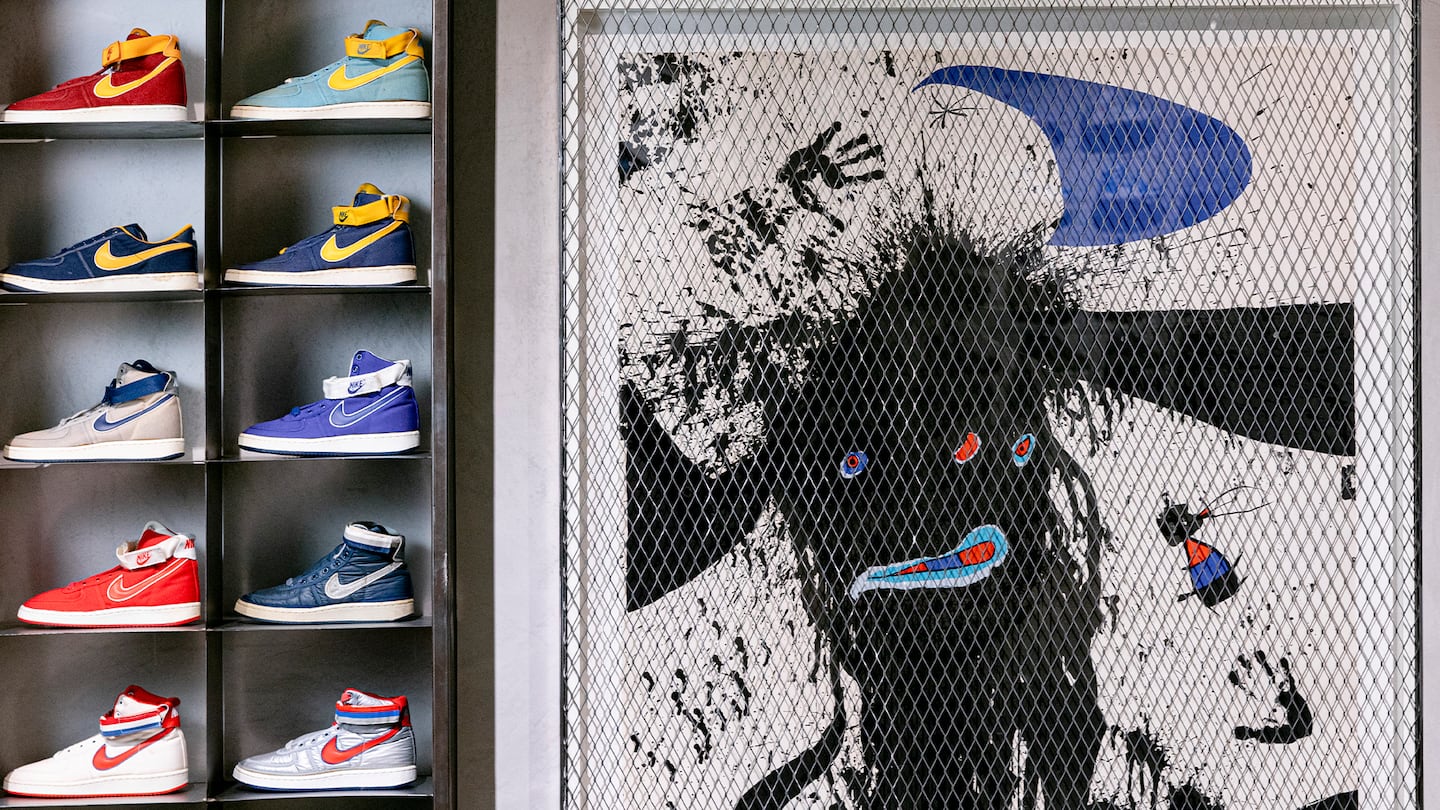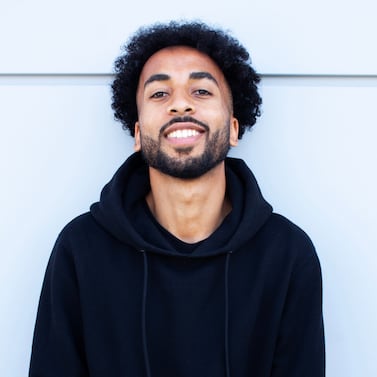
The Business of Fashion
Agenda-setting intelligence, analysis and advice for the global fashion community.

Agenda-setting intelligence, analysis and advice for the global fashion community.

Last year, the sneaker market finally ran out of steam.
Bloated inventories, declining sales in China and a high-profile fallout with a controversial celebrity ambassador posed challenges for the category’s biggest players, Nike and Adidas. On the resale market, some of the most coveted shoes, such as the Jordan 1 Dark Marina Blue and Jordan 1 Heritage were trading below their original retail value, as consumers got tired of following drop after drop.
Most critically, sneakers’ high-growth phase appears to be over. Global sneaker sales totalled $152.4 billion in 2022 according to Euromonitor, reflecting a 2.7 percent increase in sales from the year before but a dramatic slowdown compared with the 19.5 percent spike in 2021. Now through 2027, the category is projected to grow at an annual average rate of 3.6 percent.
Once the hottest footwear category for brands and retailers, sneakers are losing floor space to mules and loafers, which better represent the preppy style that currently dominates menswear. The overall assortment of men’s sneakers dropped 5 percent between 2019 and the end of 2022, according to a recent BoF Insights report on the category. Meanwhile, sandals, mules and clogs saw a 5 percent increase in the same period.
ADVERTISEMENT
“It’s the cyclical nature of fashion — sneakers have certainly enjoyed a steady stream of success over the recent years, so history would tell us we may now see a shift away from the product,” said Tim Newcomb, a journalist and footwear specialist.
Despite its waning growth potential, the sneaker is hardly obsolete; it’s simply entering a new phase.
In this new chapter for the market, incumbents will face deepening challenges from newcomers and niche brands like Asics, Salomon and Mizuno, according to Matt Powell, a retail and sporting goods analyst at The NPD Group. These performance brands, and others like Swiss running brand On have increasingly become adopted for non-sporting use in recent years, being stocked at fashion-forward retailers, on the runway at fashion week shows and worn by celebrities for red carpet appearances.
But Nike and Adidas will also have ample opportunity for growth. Their success, analysts say, lies in how quickly they can clear excess inventory and continue to deliver freshness. Nike posted earnings which beat expectations in December after customers snapped up its discounted footwear and apparel in large quantities ahead of the holiday season. Credit Suisse analysts noted that the brand’s inventory issues and declining sales in China had already reached a bottom. Adidas, meanwhile, could see a renewed sense of growth under new chief executive, Bjørn Gulden. The rollout of its Fear of God Athletics collaboration could elevate the brand’s lifestyle offering.
There will always be demand for sneaker lines like Air Jordan 1s, Nike Dunks and Air Force 1s, but many consumers are seeking out alternatives like Swiss running brand On and Japanese performance brand Mizuno.
These styles also favour the new preppy look, and complement chinos, cargo pants and cardigans better than traditional hype sneakers, which tend to be high-top basketball styles.
The shift towards these smaller brands, and others such as Asics, Athletics Footwear and Merrell, was prompted by factors such as the rise of performance-inspired footwear, known as sportstyle (a design aesthetic which takes cues from performance footwear, like waterproofing or sole construction), according to Newcomb.
From January to September last year, Asics increased revenue from its sportstyle footwear products by 18 percent to ¥31,443 million ($229 million) compared to the same period the year before, while On’s total revenue for the first half of last year was CHF 527.3 ($567 million), a 67.2 percent increase from the first half of 2021. On sneaker resale platform StockX, Salomon was the fastest-growing sneaker brand in the second half of 2022, trading up more than 2,000 percent year-over-year, according to data from StockX.
ADVERTISEMENT
These brands have also become coveted collaborators in the industry: Salomon drove excitement in its sportstyle line with tie-ups with Comme des Garçons, Kith and Maison Margiela’s diffusion label, MM6.
The world’s biggest sneaker players suffered major blows in 2022, and whether they can get back on track will depend on how fast they can clear their inventory oversupply and launch products that better suit the new preppy look.
Nike’s pile-up totalled $9.3 billion in the quarter ending Nov. 30, up 43 percent year-on-year, while Adidas’ ended its most recent quarter with €6.3 billion ($6.7 billion) in inventory, up 73 percent from the same period last year.
For Adidas, the oversupply comes with an extra hurdle: Yeezy. The termination of its partnership with Ye, formerly known as Kanye West, could cost the brand €1.8 billion ($1.9 billion) in lost revenues in 2022 alone, RBC Capital analysts estimate.
And without a culturally forward collaborator, Adidas is missing the hype factor and credibility it once had. In 2022, it cut its profit forecast four times, from an initial target of €1.3 billion ($1.4 billion) target down to €250 million.
Both Adidas and Nike will have to contend with sinking sales in China, where more consumers now favour domestic brands like local sneaker giants Anta and Li-Ning.
But the worst may be over. Nike shares spiked last month after posting a 28 percent sales increase compared to the year prior and significant progress on its “aggressive” promotional strategy.
Both companies made attempts last year to capitalise on the consumer shift to preppier styles. Adidas’ Gazelle and Samba lines gained widespread popularity once again, as well as its ever-present Stan Smith sneaker. Meanwhile, Nike tapped American artist Tom Sachs to design a “general purpose” lifestyle shoe, of which Nike produced sufficient quantities so that more customers could get their hands on them — a departure from the brand’s usual scarcity playbook.
ADVERTISEMENT
Despite the growing playing field, investors are still bullish — especially on newcomers.
In December, sneaker design startup FCTRY Lab raised $6 million in seed funding. The goal of the founder, former head of Yeezy-Adidas Innovation Lab Omar Bailey, is to make sneaker production more accessible by open-sourcing design and innovation.
And earlier in the fall, UK-based reseller Kick Game received a £3.5 million ($4.3 million) private equity investment, and is widely reported to be exploring a £150 million sale at the end of 2022.
Like any discretionary category, the sneaker market will face difficult macroeconomic conditions in 2023 as overall consumer demand cools. But the shoe has cemented itself as a wardrobe staple after a decade of immense growth — it currently dominates the majority, or 55 percent, of assortments for men’s footwear at luxury brands, the BoF Insights report found.
“We remain in a sneaker world,” Powell said. “Athletic footwear has always performed better than the market in a recession.”
 Opens in new window
Opens in new windowThe value of hyped shoes on the aftermarket has fallen in recent months, raising questions about whether it’s a momentary stumble or a sign that the category is losing steam.
Top of incoming CEO Bjørn Gulden’s in-tray will be dealing with unsold Yeezy inventory and reversing the brand’s steep decline in China.
On hasn’t taken long to turn its unconventional performance-running shoes into one of the world’s most recognisable footwear brands. The Swiss company, launched in 2010, has won credibility with the running elite while cultivating a loyal fashion fanbase, with support from tennis star Roger Federer.

Daniel-Yaw Miller is Senior Editorial Associate at The Business of Fashion. He is based in London and covers menswear, streetwear and sport.
As the German sportswear giant taps surging demand for its Samba and Gazelle sneakers, it’s also taking steps to spread its bets ahead of peak interest.
A profitable, multi-trillion dollar fashion industry populated with brands that generate minimal economic and environmental waste is within our reach, argues Lawrence Lenihan.
RFID technology has made self-checkout far more efficient than traditional scanning kiosks at retailers like Zara and Uniqlo, but the industry at large hesitates to fully embrace the innovation over concerns of theft and customer engagement.
The company has continued to struggle with growing “at scale” and issued a warning in February that revenue may not start increasing again until the fourth quarter.